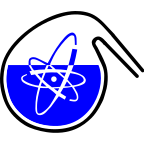Staff and patient are exposed to un avoidable radiation exposure to a wide range of radionuclides, as 99mTc, 67 Ga and 131I during nuclear medicine procedures. Although the frequency of the nuclear medicine is increasing, few data are available regarding ambient and patient exposure worldwide. The The International Commission on Radiological Protection (ICRP) has lowered the annual dose limit...
Alpha induced reactions are being implemented in the imaging and industrial fields. The alpha induced reactions will be implemented in those fields by the patent pending Switchable Radioisotope Generator (SRG). The SRG allows control over the alpha induced reactions by manipulation of the alpha producing material and the target isotope. To prove the effectiveness and practicality of the SRG,...
Keyword – proton induced nuclear reaction, experimental cross sections
The Coordinated Research Project (The International Atomic Energy Agency), entitled “Therapeutic Radiopharmaceuticals Labelled with New Emerging Radionuclides (67Cu, 186Re, 47Sc)” is focused on production methods of the 67Cu, 186Re and 47Sc radioisotopes as...
Metal Organic frameworks (MOFs) are self-assemblies of metal ions and organic ligands, known for their high crystallinity and porosity. The wide range of high and accessible porosity allows them to be explored as alternatives for traditional porous materials and for many new applications. Some of them exhibit an extraordinarily huge surface area together with a high chemical stability.
One of...
European demand for chromium has grown dramatically, leading to the need for a detailed understanding of recycling of steel sludges and separation methods. To simulate these processes, we will use the radiotracer technique. 51Cr (T1/2 = 27.7 d) was choosen as a radionuclide. The isotope can be produced by the nuclear reaction natV(p,n)51Cr at a cyclotron. We used our recently installed...
68Ga (T1/2 = 68 min) is used for molecular imaging in positron emission tomography. 68Ga decays via 1.92 MeV positron emission (89%) and electron capture (11%). Due to suitable half-life for radiolabeling and easy availability from radionuclide generator, interest in 68Ga labelled compound has increased.
The most convenient method of 68Ga production is usage of 68Ge → 68Ga radionuclide...

